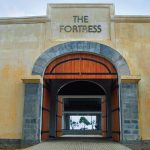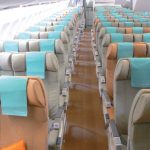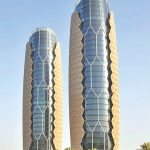-
COMMUTER PLAZA AT NUGEGODA
April 2013
STUDENT: GAMIKA KODAGODA
ISTITUTION: CITY SCHOOL OF ARCHITECTURE
COMPREHENSIVE DESIGN PROJECT: SLIA PART II, MArch (UWE) – 2011/ 2012
CLIENT: Ministry of Economic Development in collaboration with Urban Development Authority of Sri Lanka
PROJECT BACKGROUND
Nugegoda is situated in the administrative capital of the island of Sri Lanka. It is a busy and vibrant town with small to medium scale commercial activities and also educational and transportation activities.
The project aims to create a well-connected facilitator within the existing infrastructure facilities (railway station, bus stand and ‘Janatha Pola’ the wet market) and a breathing space, which is lacking in the present context for the commuters, identified as the general public and the students. The project will house retail shops, and a public performance arena together with a public plaza to revitalise the dynamic character of Nugegoda, while keeping its existing social and physical characteristics.
The project itself is formulated from the needs of the user and its context. Its function is limited not only to a plaza, which accommodates different levels of shopping, food courts, exhibition and performances for people but also the Exploratorium, which consists of various informal learning activities accommodating the needs of the student population in the context. The direct engagement of the existing community with the project (pavement hawkers, market shop holders) will make the project more socially sustainable: it further creates different avenues where the community would have various economic benefits as well.
PROBLEM ANALYSIS AND DESIGN SOLUTION
Architectural problem
1. How to create a place for people in a busy urban setting
2. How to create a building with public activities in line with the dynamic movement pattern of the context with connections to other infrastructure facilities
Design solution
Identifying the user categories and cater to their needs in connection to other building facilities. Identify a systematic manner in which functions could happen with the commuter movement.
Concept Formulation
Enhance the existing dynamic movement in the context, to another level and maintain the continuity within spaces to create interaction.
ARCHITECTURAL OBJECTIVES
To create a magnet in the heart of the town, which links to the surrounding buildings and acts as a valuable urban space where the community could gather for trade activities, to gain knowledge, entertainment and leisure.
An attempt to extract the existing components such as railway station, bus stand, wet market (Janatha Pola), scattered in different locations of the town center and attempt to create a common foreground.
To create a comprehensive urban response by strengthening the weak links in the surrounding as an answer to the present situation with more open green surfaces.
To create layers as 3 levels of functions. Level one is the first layer in which it enhances the existing terrain and the vibrant pedestrian movement that continue with street activities and payment hawkers’ shelter. The intermediate level acts as the second layer and it consists of functions such as the market, shopping and trade related activities together with a performance arena with a linkage to the railway station and the bus stand. The top most level acts as a third layer in which the Exploratorium and its related functions are accommodated and it is linked to the wet market (Janatha pola). The third layer faces the urban park.
































